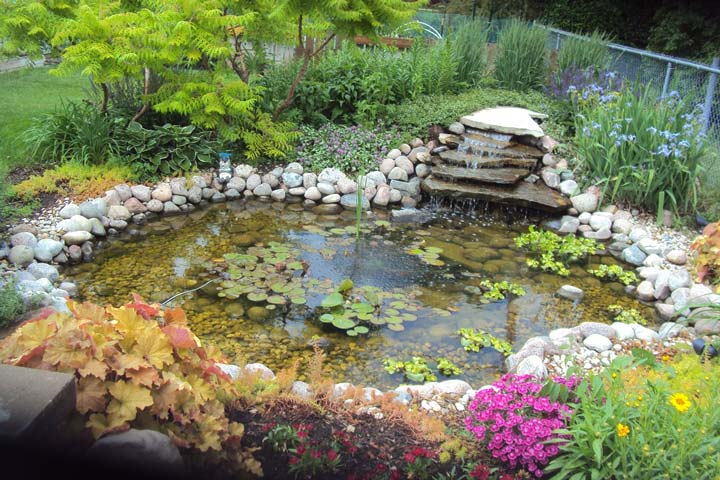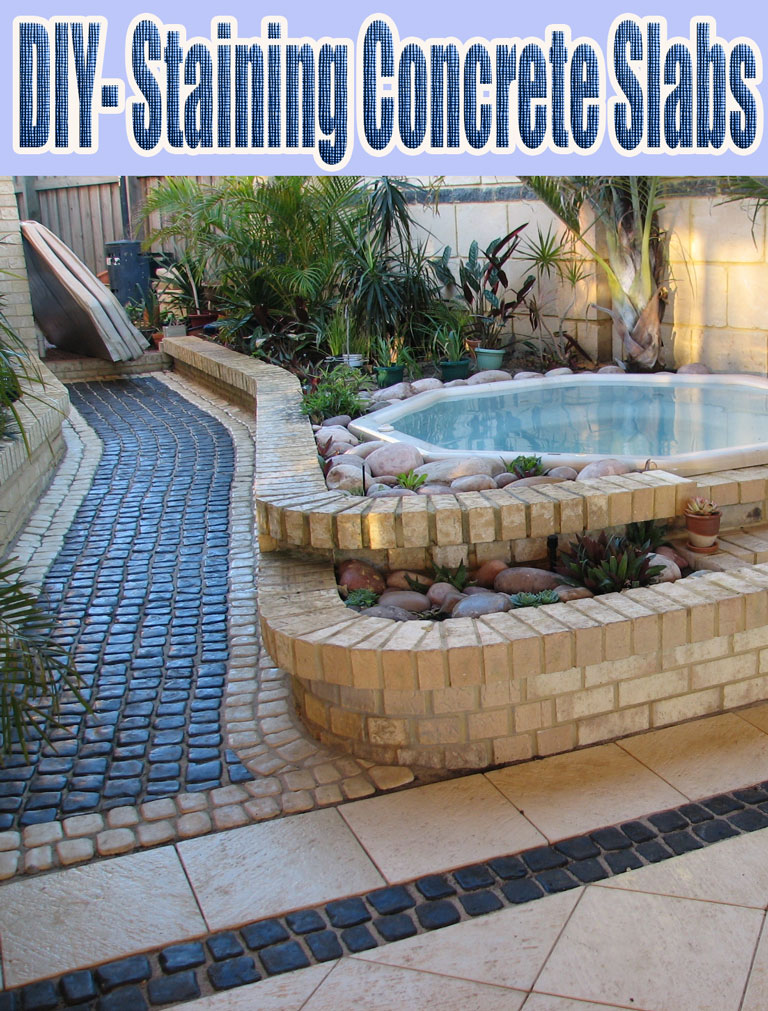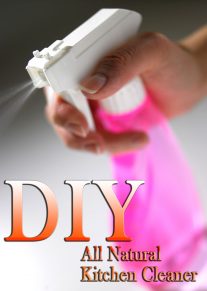
Bring an exotic touch to your patio, water garden, deck, or yard by making a small water garden in a tub.
Use a plastic or glazed ceramic container or a plastic-lined, wooden half-barrel as the container, and add aquatic and marsh plants, and perhaps goldfish, for color and drama.
Tools and Materials:
- Plastic or ceramic container or wooden half-barrel
- Plastic liner, galvanized screws, and wood strips, if needed
- Water pump, nozzle, and electrical outlet, optional
- Water
- Plastic plant pots
- Soil mix for aquatic plants
- Aquatic plants
- Newspaper
- Gravel
Install the barrel liner. If you’re using a wooden half-barrel, line it with a sheet of pond liner, available at garden centers. Adjust the liner by making several large folds in the material and draping it over the edge of the barrel. Fill the barrel half full with water to hold the liner in place while you trim and fasten the upper edge to the top of the barrel, just inside the rim. Sandwich the liner between the barrel and narrow wooden or galvanized metal strips. Fasten with galvanized screws.
Position the container. Empty the container, if necessary. Place it on a sturdy, level surface where it will receive at least 6 hours of sun per day. The tub will weigh about 10 pounds per gallon when filled. You can also partially bury the container in the ground. Try this method in hot climates where the summer sun can overheat small aboveground pools.
Fill with water. Add water until the container is about two-thirds full. Let the temperature stabilize and the chlorine from your municipal water supply dissipate for 24 hours before adding plants. (If adding fish, ask if your water company uses chloramine, a water supply disinfectant. If it does, be sure to use a water conditioner, such as Amquel, to neutralize the chemical before adding the fish.)
Install optional water pump. For the tranquil sound of moving water, add a small fountain attached to a recirculating pump. Set the pump with attached pipe and nozzle in the bottom of the container. Always plug water pumps into an electrical outlet with a ground-fault circuit interrupter to avoid risk of electrocution. Adjust the water flow to the desired force. Keep in mind that floating plants, such as water lilies, do not like water splashing on their leaves.
Add plants. Plant aquatic and marsh plants in plastic pots filled with special water-plant soil mix. Place newspaper over the drainage holes in the pots to prevent soil leakage. After planting, cover the surface of the soil with gravel. Set pots directly on the bottom of the tub or on bricks or inverted pots to raise plants to the desired level.
Tips:
Add two bunches of submerged plants, one floating plant, and one or two marsh plants per square yard of water surface to keep algae in check. Plants should cover 60 to 70 percent of the surface.
Remove debris regularly, and replace water lost to evaporation, but don’t change any water. Within a few weeks, the water should clear.
Here you can find out how to select right plants for your water garden.




Leave a Reply